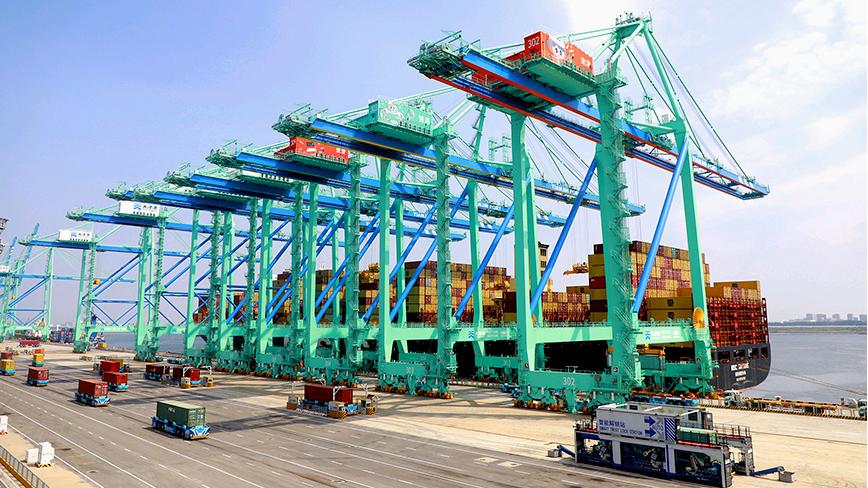China sees improving livelihood in 75 years
BEIJING, Oct. 7 (Xinhua) -- Since the founding of the People's Republic of China 75 years ago, the living standards of the Chinese people have progressed from mere subsistence to moderate prosperity in all aspects.
The per capita disposable income of China's residents was only 49.7 yuan (7.1 U.S. dollars) in 1949, but climbed to 39,218 yuan in 2023, an increase of 75.8 times, or an annual growth rate of 6 percent, adjusted for inflation, according to a report released by the National Bureau of Statistics (NBS).
Remarkable changes have been made since China ushered in the reform and opening up in 1978. The private economy has developed rapidly, and the national economy has expanded at a high speed.
Before the reform and opening up, the consumption level of residents was relatively low, and household expenditures were mainly used for food, clothing and daily necessities, but now people are spending more on durable goods such as automobiles and household appliances.
The changes can be mirrored in the Engel's coefficient, which measures food expenditures as a proportion of total household spending. The index was 29.8 percent in 2023, down 34.1 percentage points from 63.9 percent in 1978.
Take the household home appliance ownership for example, the average number of refrigerators per 100 households reached 103.4 at the end of 2023, in contrast to merely 0.2 in 1981. The number of household color TVs per 100 households stood at 107.8 at the end of 2023, in contrast to 0.6 in 1981. The number of household washing machines per 100 households stood at 98.2 at the end of 2023, in contrast to 6.3 in 1981.
When the People's Republic of China was founded, the housing conditions were relatively poor. After the reform and opening up, the housing system has transformed from welfare housing allocation to marketization, and the shortage of housing for urban and rural residents gradually eased. The living conditions became more comfortable and spacious.
The per capita housing floor area climbed 4.8 times in 2020 over 1978, reaching 38.6 square meters for urban residents and 46.8 square meters for rural residents, said the NBS report citing the seventh national census results.
Chinese people are enjoying longer life expectancy. The average life expectancy reached 78.6 years in 2023, an increase of 43.6 years compared to the early days of the People's Republic of China.
At the end of 2023, 99.8 percent of the urban communities had access to highways, an increase of 0.6 percentage points from 2013, and 99.9 percent of the rural communities had access to cable TV signals, up 10.7 percentage points from 2013.
Drinking water supplies, which received centralized purification treatment, covered 98.2 percent of the urban communities in 2023, up 6.9 percentage points from 2013, and 88.2 percent of villages, an increase of 42.6 percentage points from 2013.
Medical and educational services have also improved. In 2023, 96.1 percent of the villages had medical service stations, up 14.5 percentage points from 2013. Meanwhile, 92.4 percent of the villages had convenient access to kindergartens or preschool classes, up 16.7 percentage points from 2013.
With the gradual progress of urbanization, the consumption power of urban residents has improved, the supply of commodities has become increasingly abundant, and the urban consumer market has maintained rapid growth.
The retail sales of consumer goods in urban areas registered an average annual growth rate of 12.1 percent from 1953 to 2023. The proportion of urban retail sales of consumer goods in total retail sales grew from 45.4 percent in 1952 to 86.4 percent in 2023.
In the development process, China has secured victories in the continued fight against poverty. By 2020, 98.99 million people in rural China had been lifted out of poverty, and all 832 impoverished counties were officially recognized as having exited poverty.
Photos
Related Stories
Copyright © 2024 People's Daily Online. All Rights Reserved.









